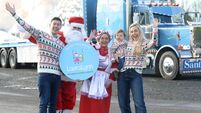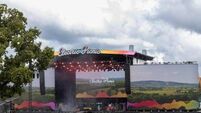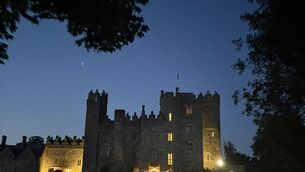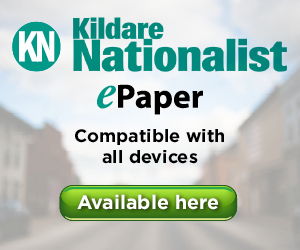Kildare artist hangs his work on the Falls Road
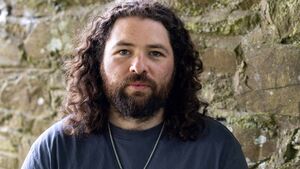
Artist Rónán Ó Raghallaigh
A KILDARE artist has just opened his second solo exhibition in Belfast on the very nature of our sacred places, and how we must honour them in their pagan originality.
“There are sacred places in the land, they hold ghosts, and we have disturbed them,” said artist Rónán Ó Raghallaigh (32) from Naas.
‘Turais Taibhsí’ which translates as ‘Haunted Pilgrimages’ opened in the Cultúrlann Mc Adam Ó Fiaich on the Falls Road in west Belfast on 7 August, and is showing until 11 September.
Each painting in this exhibition is the result of a personal pilgrimage to a sacred place in the Irish landscape, and the titles of the paintings are in Irish honouring the original names of these places and the memories they hold.
Rónán researched the folklore imbued in these places, their logainmneacha (Irish place names) and archaeology.
He has a personal connection to many of the places visited. He performed meditations to ‘channel’ the places, like the filí (Gaelic poets) might have done, and his research and meditation visions formed a spring for new paintings.
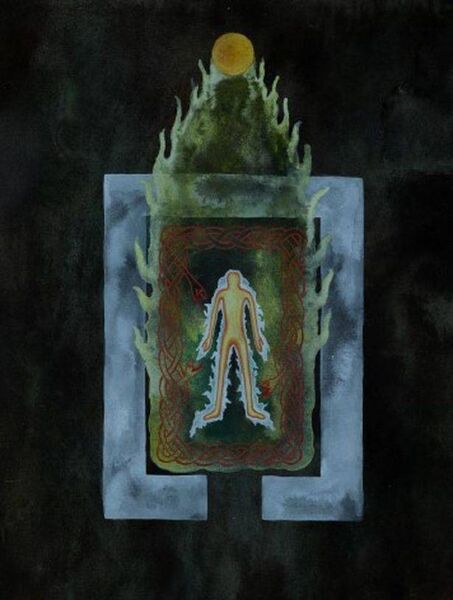
“Sacred places are sites of conflict, their folklore has been overlaid by Christianity,” he explained.” Their Irish names have been translated, but archaeological finds have been removed.
“They are damaged naturally, but some have been purposefully vandalised like at the Hill of Tara. [Note the amount of 18th and 19th century graffiti on the walls of the Paasage tomb.] Some are destroyed by state-approved industry such as quarrying of the Hill of Allen by Roadstone, while most sites are on private land, and are often surrounded by Sitka spruce forests”.
They prompt ancestral memories at odds with Rónán’s contemporary life such as his grandfather’s turf cutting on Church Mountain, having never held a ‘sleán’ himself.
The painting method mirrors these conflicts- some parts are deliberately unfinished and obscured. Visual motifs from various periods of vernacular Irish art are overlaid on top of each other, blended with abstraction.
Sacred places are where the return of our repressed folklore, customs and language occurs most potently.
What do the gods, spirits and ancestors think of us? This exhibition remembers half-forgotten deities, historical events, folk customs and family stories prompted by place.
It is an exploration of our postcolonial consciousness rooted in land, and how tending to it might help us heal and navigate the environmental, industrial, spiritual and social challenges of today.
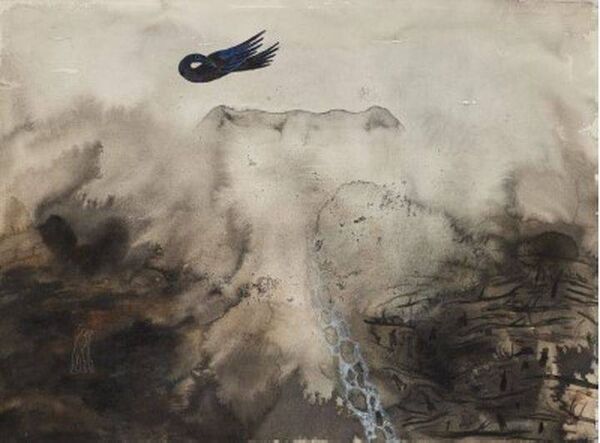
Rónán works with painting, writing and performance.
His practice engages with pre-Christian Ireland as a means for contemporary postcolonial action. Folklore, history and archaeology rooted in the Irish landscape form a foundation for research. He is re-learning Irish as an adult which greatly informs his work.
Rónán graduated from NCAD in 2021 with an MFA Art in the Contemporary World and has exhibited his work in Ireland and abroad.
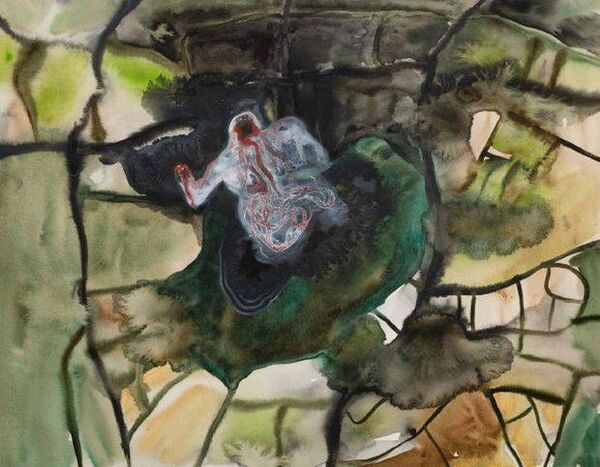
‘Turais Taibhsí’ marks his second solo exhibition in Belfast, having exhibited ‘Vae Victis’ in Platform Arts in 2022.
Cultúrlann Mc Adam Ó Fiaich is an Irish language, arts and cultural centre offering Irish language classes, art workshops, céilithe, events for young people, concerts and art exhibitions all take place throughout the year.
Rónán is incredibly excited to exhibit in Cultúrlann, given its position in an urban centre on land still claimed by the United Kingdom where Irish was not recognised as an official language until 2022.
As Rónán does not come from a Gaeltacht or Irish speaking home or school background, he is particularly drawn to how the Belfast Gaeltacht contradicts stereotypical assumptions of Irish as an unspoilt rural language.
It is the perfect place to exhibit these paintings in their remembrance of pre-colonial ways shared with Britain and other cultures all around the world, in response to contemporary capitalism, Christianity, nationalism and colonialism

